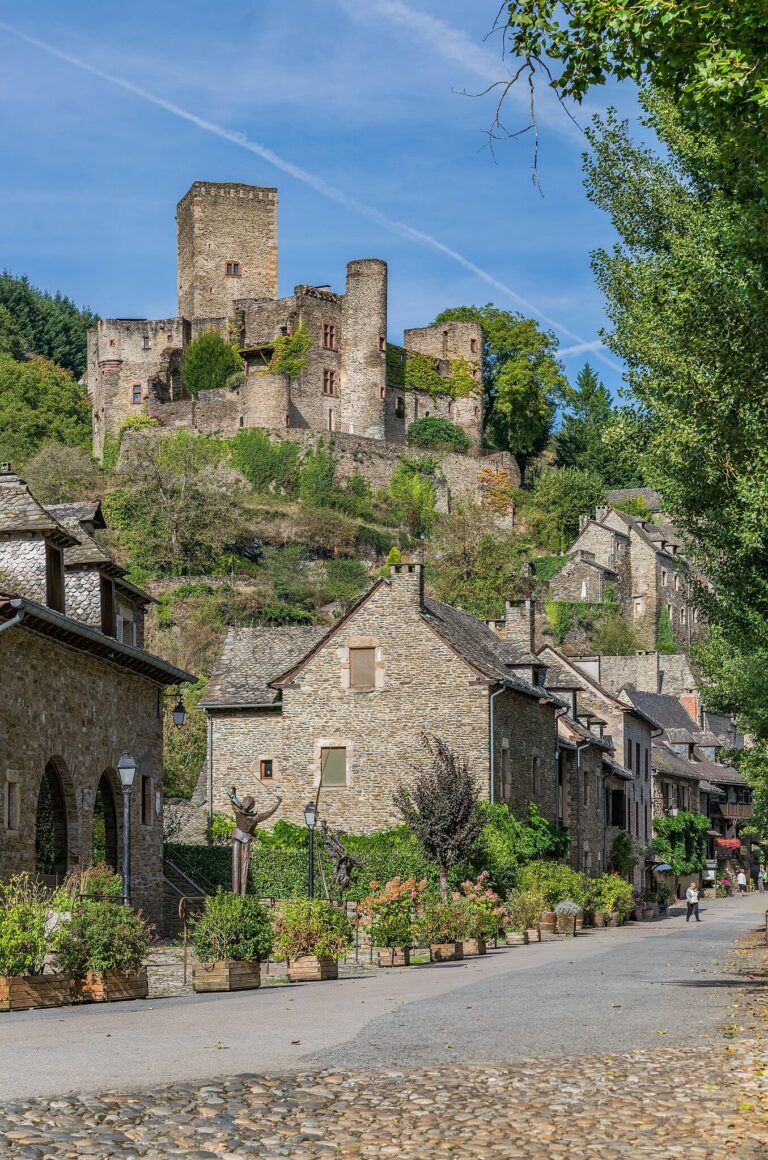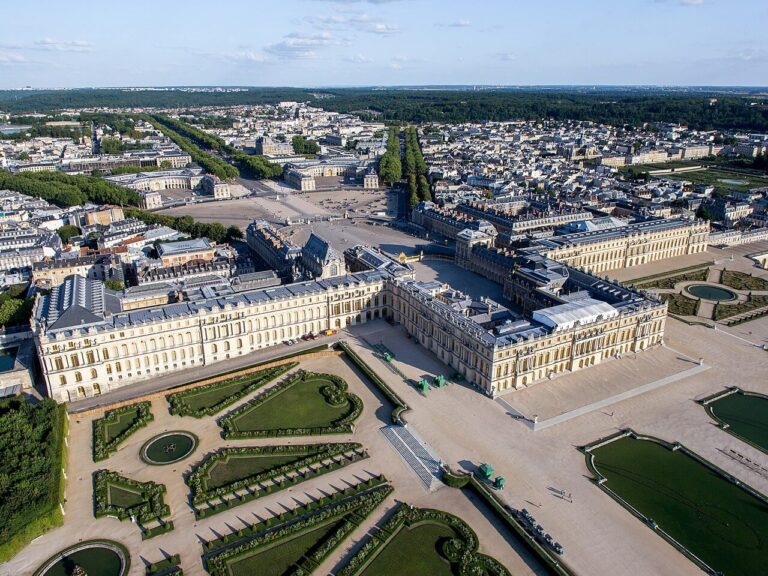35 Must-Visit Castles in the South of France
The South of France is a region that has captured the hearts of many, with its stunning Mediterranean coastline, rich cultural history, and delicious culinary delights. From the glamour of the French Riviera to the rugged beauty of the Pyrenees Mountains, there is no shortage of things to see and do in this amazing part of the world.
There are many castles in the south of France, with a rich history and cultural significance. Many of these castles were built during the Middle Ages and served as defensive structures, as well as being the residence of French Kings and aristocrats. Many of these historic castles are now a historic monument and are open to visitors. Here, you can learn more about the fascinating history of the area and marvel at the spectacular views as many castles are built on hills and rocks.
In this post, you will find the best castles in the South of France that you should visit. Some of these French châteaux are already a popular tourist attraction but you will also find a few hidden gems that you can visit. At the end of the post you will find a map with these castles in the South of France.
See also these articles with fairytale castles in France:
- The Best Castles in the Loire Valley (including Château de Chenonceau and Château de Cheverny)
- The Best Castles in the dordogne
- Visit the Former Royal Palaces in France (including Château de Fontainebleau)

Palais des Papes
The Palais de Papes, also known as the Palace of the Popes, is a remarkable piece of architectural and historical significance overlooking the Rhône riverin Avignon, France. It is the largest and most important Gothic palace in the world. It covers an area of approximately 11,000 square meters and it was built between 1335 and 1364 during the Avignon Papacy.
The palace served as the residence of the Popes during their exile from Rome and contains a variety of chapels, halls, and chambers, including the Chapel of the Popes and the Great Audience Chamber. It has been designated as a UNESCO World Heritage Site and it is now open to visitors.

Château de Peyrepertuse
Located on a hill in the French Pyrenees stands the Castle of Peyrepertuse. The ruined caste is one of the largest Cathar castles (medieval castles in the Languedoc region that offered refuge to dispossessed Cathars). The castle was built in the 11th century by the lords of the Carcassonais region and is located on a rocky promontory at an altitude of 800 meters. The castle offers breathtaking views of the surrounding landscape and has been designated as a UNESCO World Heritage Site. Despite being in a state of ruin, the castle is open to the public and is a popular destination for hikers and history enthusiasts.
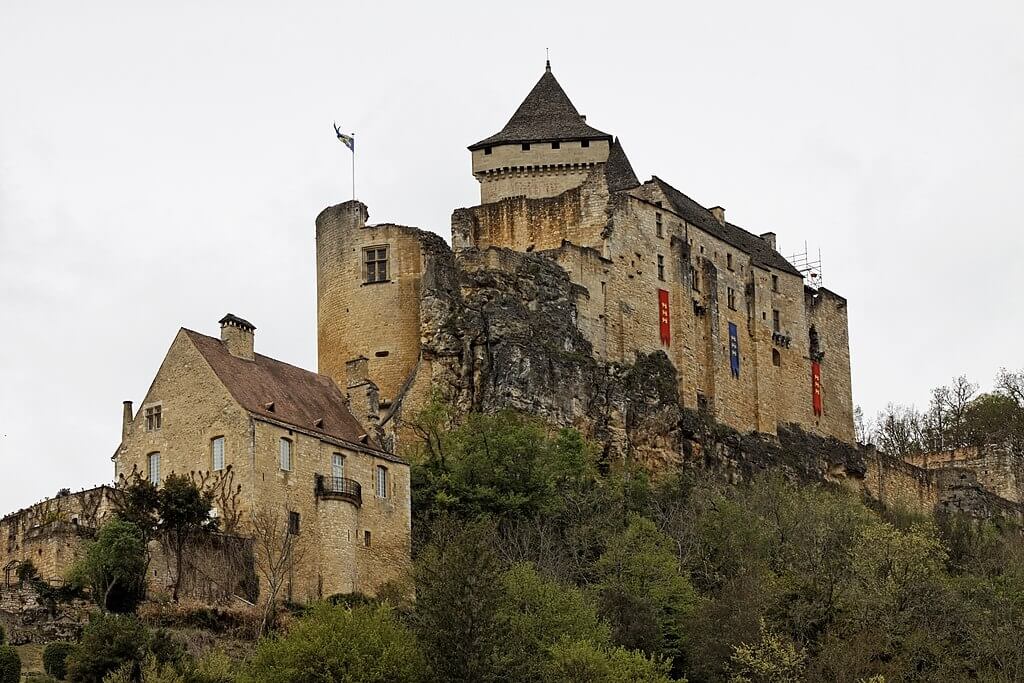
Château de Castelnaud
Château de Castelnaud is a well-preserved medieval fortress located in the Dordogne region of France. It was built in the 12th century and is located on a rocky hill overlooking the Dordogne River. The castle has a long history of military conflict, having been involved in the Hundred Years’ War between England and France in the 14th and 15th centuries. Today, it is open to the public as a museum and features a collection of medieval weapons and armor, as well as interactive exhibits and demonstrations of medieval crafts.

Château Royal de Collioure
Château Royal de Collioure is a former Royal castle that was built in the 13th century by the Counts of Roussillon and the Kings of Aragon. The castle is located close to the Spanish border and until the 17th century it was owned by the Spanish, including the Kings of Mallorca.
The castle is built on top of a Roman castrum overlooking the Mediterranean Sea and the town of Collioure. Today, the castle is open to visitors as a museum.
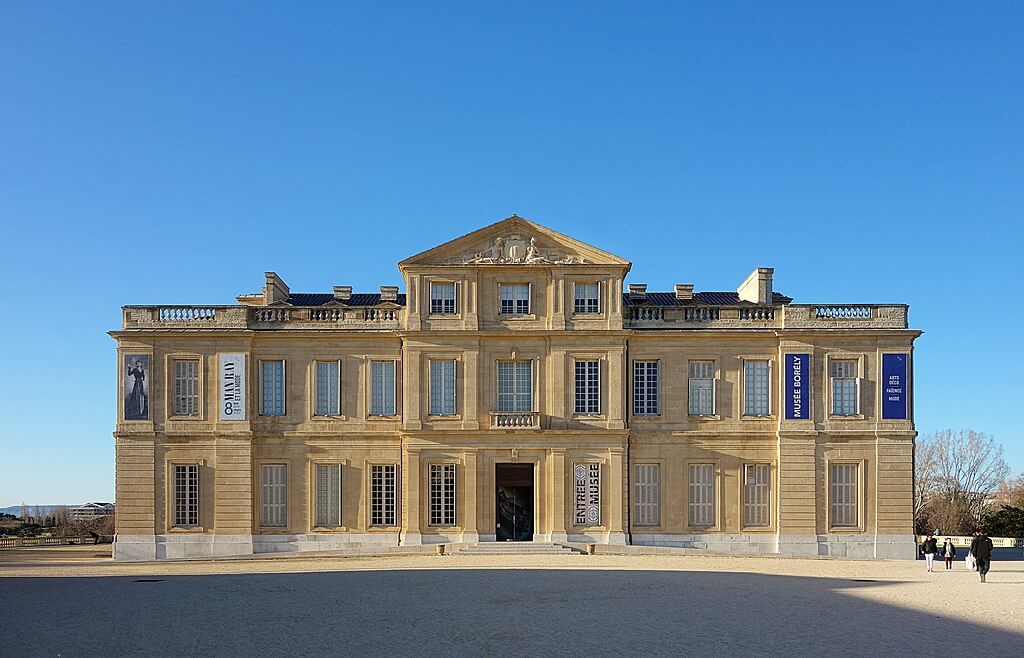
Château Borély
This 18th century chateau is located in a large park in Marseille. The castle was built by the Borély family, who were an influential family in those days. The neoclassical building was transformed into a museum and today it is the home of the Museum of Decorative Arts, Earthenware and Fashion.

Château de Lourmarin
Lourmarin Castle is a medieval castle in the Provence region of France. The castle was originally a 12th century fortress but from the 15th century it was transformed into the first Renaissance building in the Provence. Today, the castle is a museum showcasing a collection of furniture, engravings, art, and musical instruments.

Château de Beynac
Beynac Castle is a medieval castle perched high upon a cliff overlooking the Dordogne region. The castle was built in the 2th century by the barons of Beynac to protect the valley and features double crenellated walls, double moats, and a double barbican.
The castle’s oldest part is a Romanesque keep with attached watch towers and a narrow spiral staircase. The castle also has a 14th century residence, a 16th and 17th century residence, and a 17th century apartment with woodwork and a painted ceiling. Today, the castle is open to visitors where they can see tapestries and other artifacts from the Lords of the Castle.

Château de Simiane la Rotonde
The Castle of Simiane la Rotonde is a castle located in the village of Simiane-la-Rotonde in the Alpes-de-Haute-Provence department. It is known for its seigniorial dwelling and the keep called the rotunda with its impressive dome and stone ribs, which is an impressive example of Provençal Romanesque art.
The rotunda dates from the end of the 12th or beginning of the 13th century, while the rest of the castle dates from the 13th and 14th centuries. The castle was abandoned in the 16th century and part of it collapsed in the 18th century. The castle has been restored and now hosts visitors, exhibitions, and events.
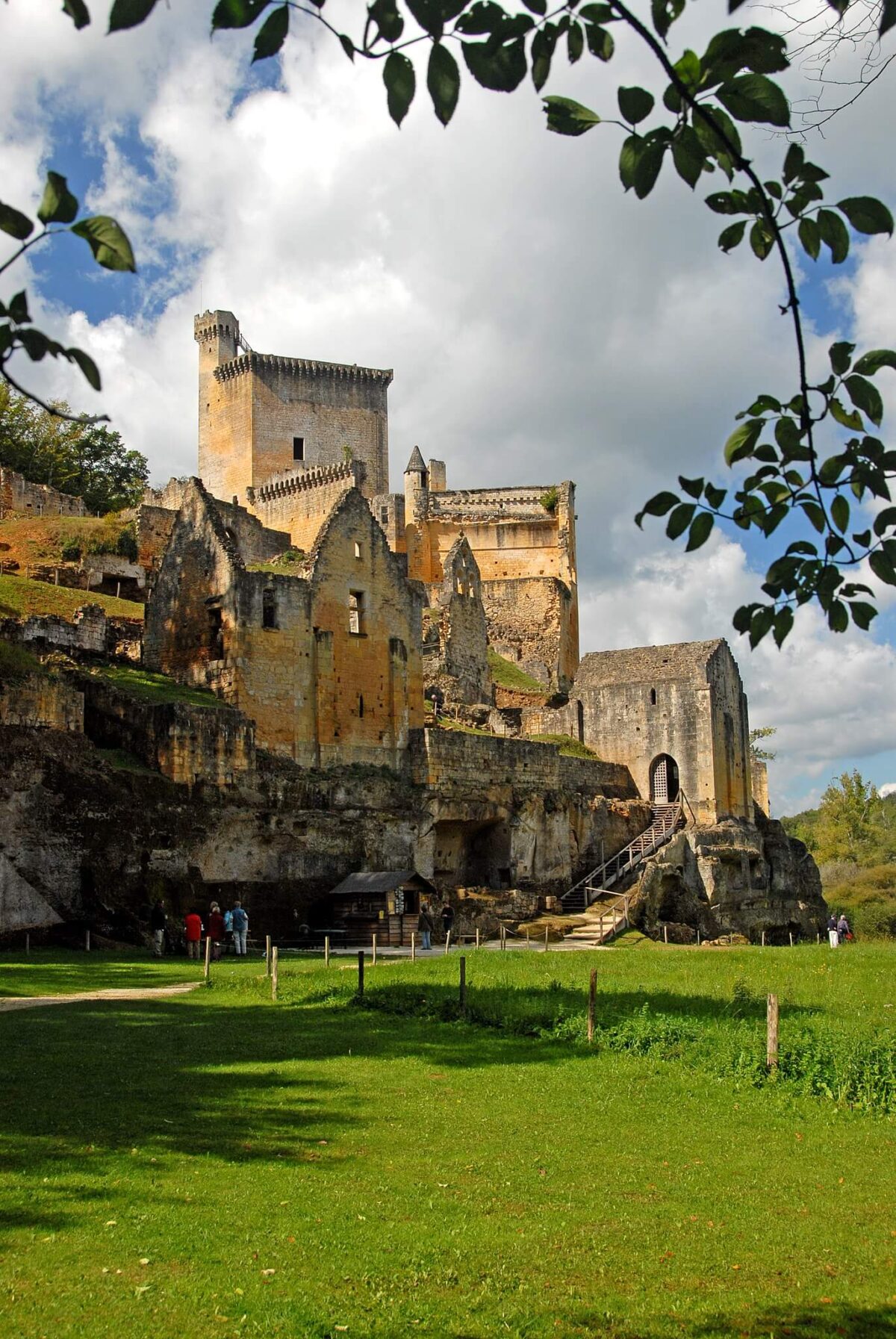
Château de Commarque
The Castle of Commarque is a castle located in the Dordogne region of France. It was built in the 12th century to protect the Benedictine abbey of Sarlat and initially consisted of a simple wooden tower on a cliff. Over time, the castle was expanded and occupied by various lineages of small nobility, including the Beynac family.
It was occupied by the English during the Hundred Years War and was abandoned after the death of the last squire, Guy de Beynac, in 1656. In 1972, the castle was bought by Hubert de Commarque, who began the process of rescuing and restoring it. The castle is now open to visitors, offering guided tours in English in French and workshops in archery, stone carving, and more. Visit the website for more information.
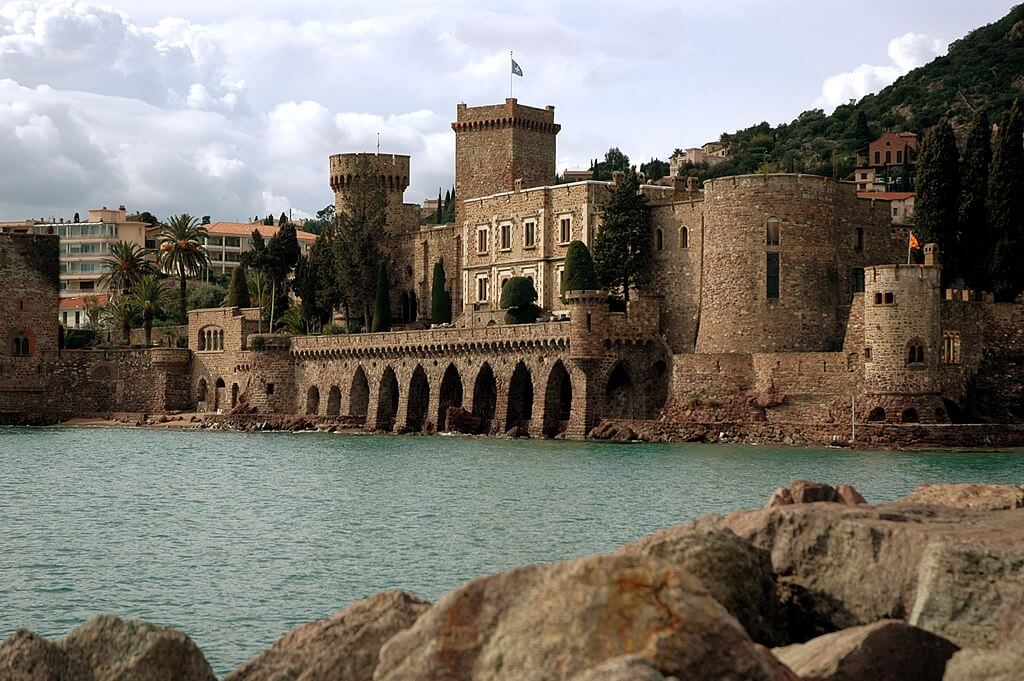
Château de la Napoule
The Château de la Napoule is a 14th century castle located near Nice that has been restored by the American couple Henry and Marie Clews. The castle has a rich history, having been rebuilt multiple times over the centuries. During the Second World War, Marie acted as the maid of the castle so that she could continue living there during the German occupation.
Henry and Marie not only restored the castle, but also its gardens, which feature elements of a French formal garden, an English landscape garden, and three smaller gardens in an Italian style. Marie also founded the La Napoule Art Foundation, which now uses the castle as a cultural center that is open to the public.
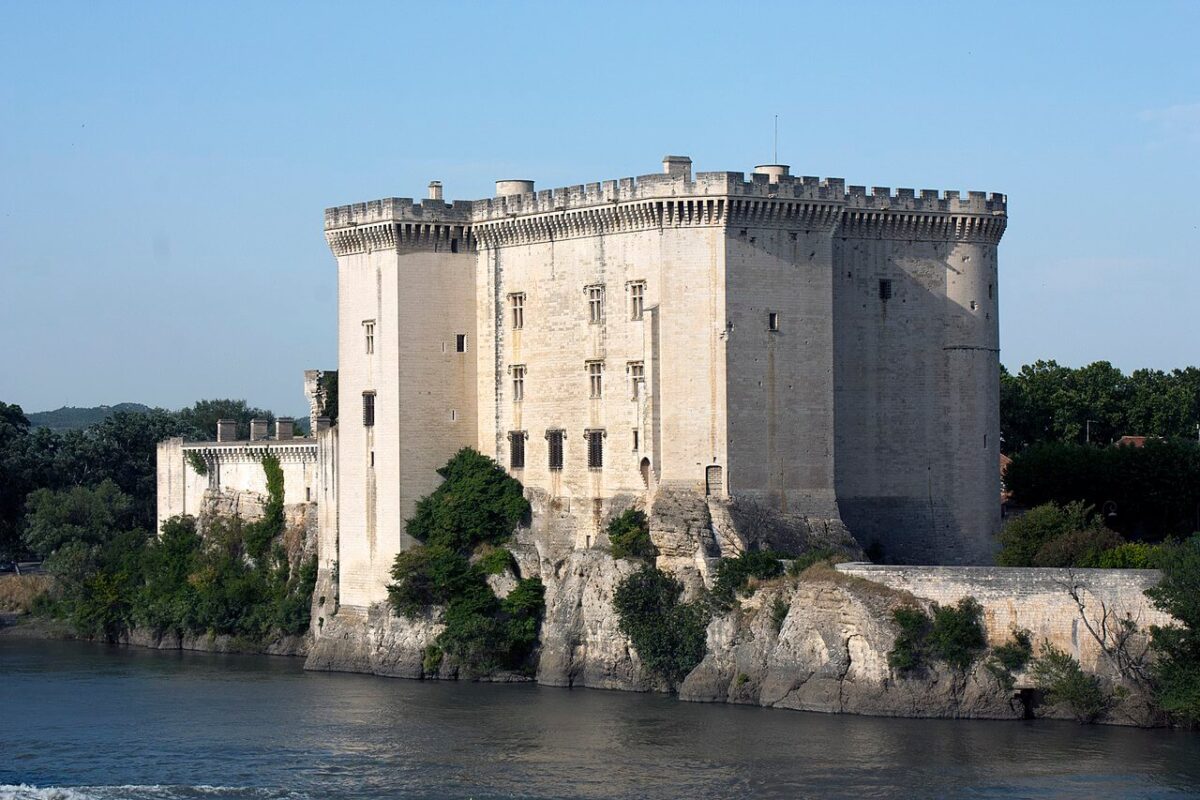
Château de Tarascon
Tarascon Castle is a 15th century Gothic castle, located on the banks of the Rhone. The castle is also named Château du Bon Roi René, after the last builder King René d’Anjou. The castle has 45-meter-high walls with two round towers (a Clock Tower and Chapel Tower).
Apart from a Royal residence, the castle also served as a prison for many centuries. Throughout the castle, you will find graffiti engravings on the walls from al the prisoners that stayed there. Not just French prisoners stayed at this castle, but you can also find graffiti from Spanish, English, and Dutch prisoners.
Today, the castle is home to the René d’Anjou Art Center where you can see the collection of René d’Anjou together with contemporary art exhibitions.

Château des Baux de Provence
Located in the heart of the Provence stand the remains of the Château des Baux de Provence. The fortified castle is located atop the plateau of Les Baux to protect the occupants and the town while also being the perfect spot to observe the surrounding countryside. Visitors to the castle can see the castle ruins as well as replicas of huge siege engines and the biggest trebuchet in Europe.
Château de Gordes
The Castle of Gordes is an 11th century castle, located in the heart of the village. Built around 300 meters above sea level it overlooks the village and the surrounding countryside in the Luberon Regional Natural Park. The castle was rebuilt in the early 16th century when it got its Renaissance appearance. The castle is now home to a museum.

Château de Foix
Château de Foix is a castle in the Ariège region of France. It was built in the style of a 7th-century fortification and served as the capital of the County of Foix from 1034. It played a significant role in medieval military history and served as a refuge for Cathars during the crusade against the Albigensians.
From 1479, the Counts of Foix became Kings of Navarre and the last of them, Henri IV of France, annexed the Pyrrenean lands to France. The castle served as a garrison and prison until 1862, and since 1930 it has housed the Ariège départemental museum, which focuses on the history of the castle site and the life of Foix at the time of the Counts.
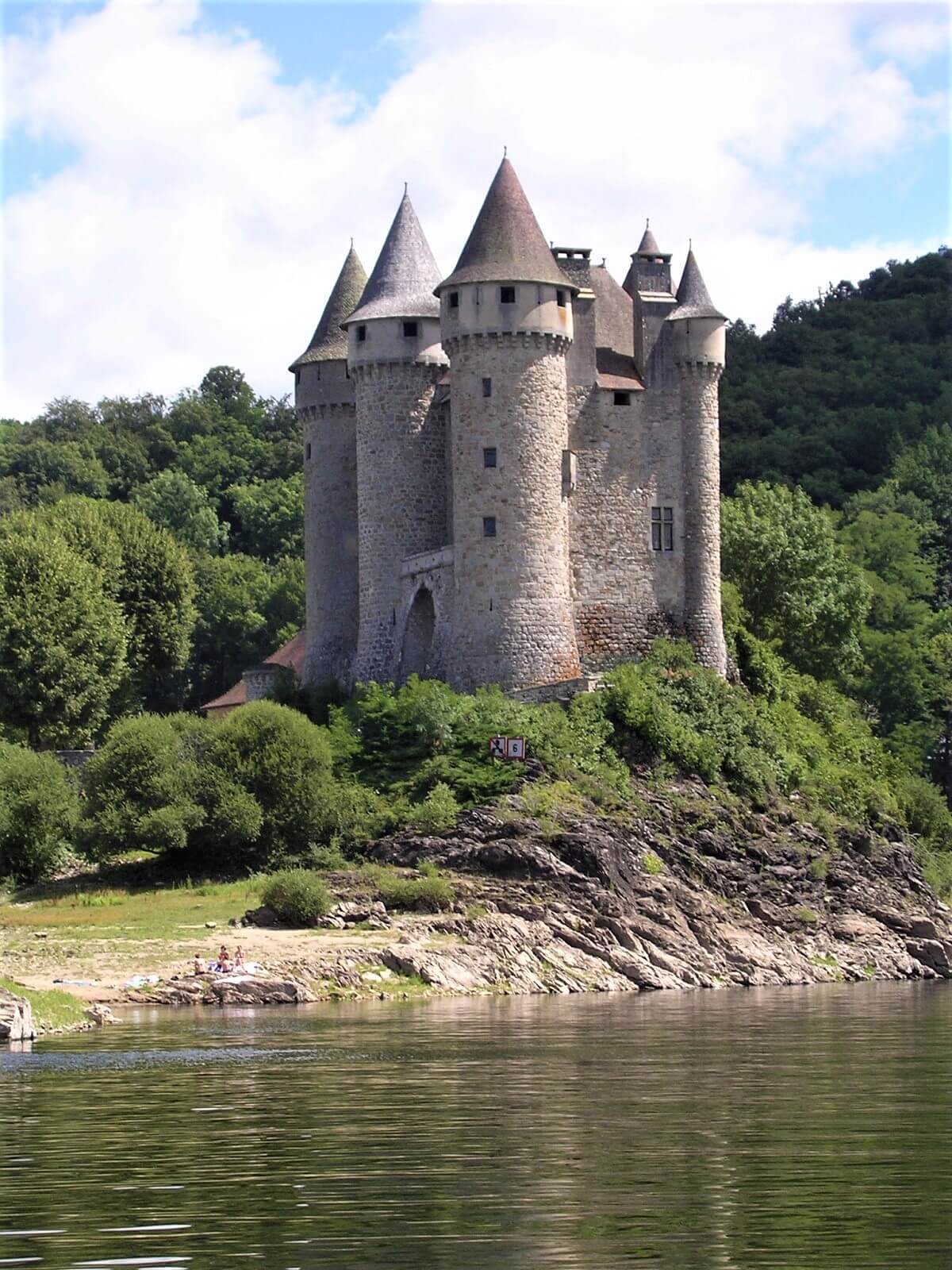
Château de Val
Château de Val is a 13th century castle in the town of Lanobre. The castle was built on a rock of 30 meters high overlooking the valley. After a flood in 1946 the castle was abandoned, however the water never reached the castle. Today, the castle is located on the edge of an artificial lake and it is open to visitors.
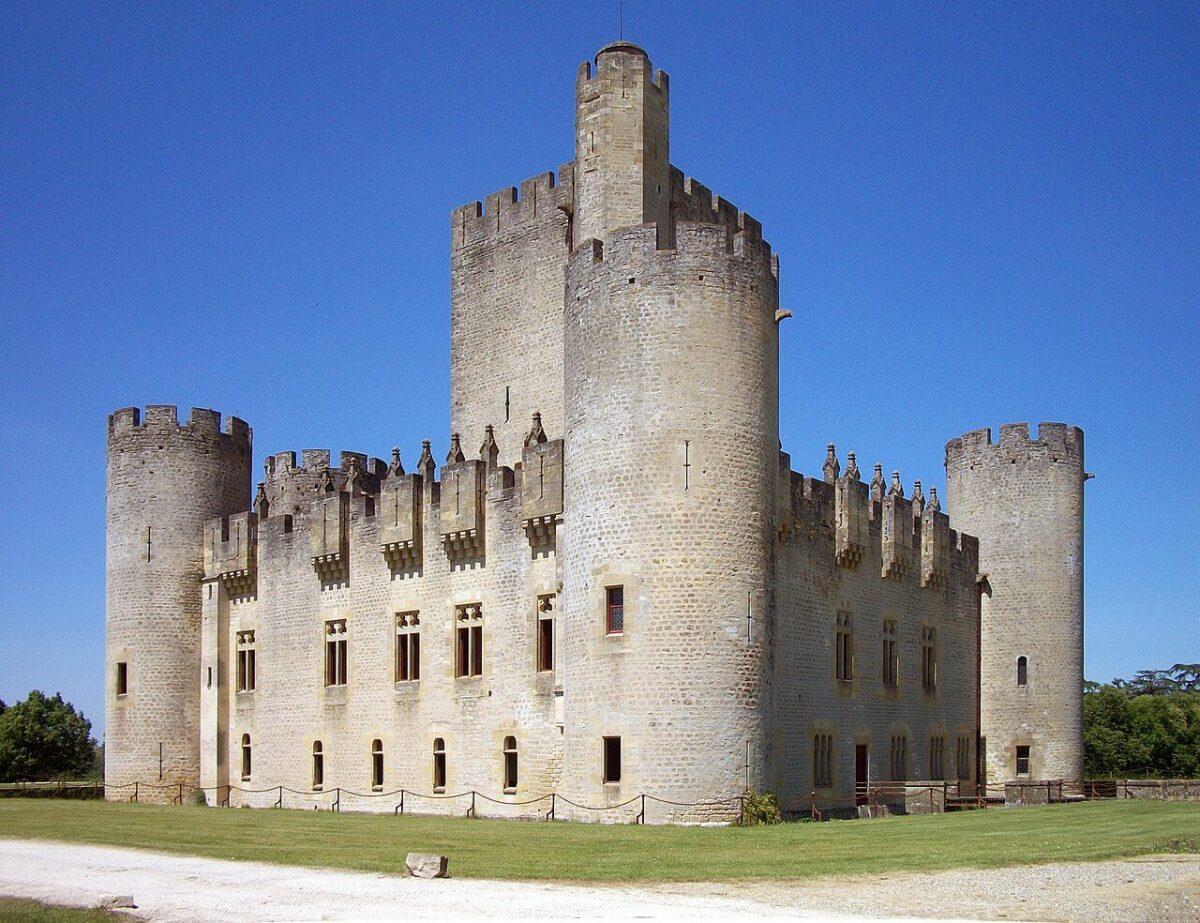
Château de Roquetaillade
The Castle of Roquetaillade was built in the 13th century and has been inhabited by the same family for over 700 years. The original castle was built by Charlemagne on his way to the Pyrenees with Roland, but nothing remains of this structure. In 1306, Cardinal de la Mothe received permission from the English King Edward I to build a new fortress, known as le Château Neuf. This castle was square in shape with six towers and a central keep and was restored and transformed by Viollet-le-Duc in the 19th century.
The interior decorations, including furnishings and paintings, were also created by Viollet-le-Duc and are listed as French Heritage. The château park includes remains of the medieval curtain wall, a barbican, a 19th century chalet, and a pigeon loft. The castle has been open to the public and is the most visited castle in the Bordeaux region.

Château Comtal
Comtal Castle is a medieval castle located in the city of Carcassone. The castle was built in the 12th century and served as the residence of the Counts of Carcassonne. The castle is located within the walls of the Cité de Carcassonne, a well-preserved medieval fortified city. It is now open to the public as a museum, showcasing the history of the castle and the city of Carcassonne.
Château de Sommières
Château de Sommières is a 10th century fortress that was built by the house of Bermond, lords of Anduze and Sauve. In the 13th century the castle became a royal fortress and it was besieges during multiple wars that followed. The castle was left to ruin but in recent years the castle and the castle chapel have been restored.

Château de Flaugergues
Château de Flaugergues is a large country house outside Montpellier in Southern France. The house was built by Etienne de Flaugergues as one of the many folies that was built in the region. Folies are country houses that were built by aristocrats and served as summer houses.
In 1811, the house was bought by the Boussairolles family who also designed the orangerie and the English-style garden. The main features of this country house are the staircase which occupies a quarter of the entire home, rare Flemish tapestries, and refined furniture. The house and gardens are open to visitors and you can also find a restaurant on the estate.

Châteaux de Lastours
The Châteaux de Lastours are four Cathar castles located on a rocky spur above the village of Lastours to control the access to Montagne Noire and the Cabardes region. The four medieval castles called Cabaret, Tour Régine, Surdespine, and Quertinheux are now in ruins but in the 13th century they were the center of religious activity by the Cathars. These four castles are some of the few Cathar castles that have survived.

Château de Saissac
Château de Saissac is a medieval Cathar castle northwest of Carcassone in the Aude region. The castle was built in a strategic location at the entry of the Montagne Noire and it was the residence of the powerful Tencavel family. After the French revolution, the castle fell into ruin but in recent years it has been restored in 16th century style.

Château de Lagarde
Château de Lagarde is a ruined castle overlooking the valley near the village of Lagarde. The castle was first mentioned in the 10th century and over time it was enlarged and modified by adding Gothic features. The castle was partially destroyed during the French revolution only leaving several towers and the curtain wall.

Château de Montségur
Château de Montségur is a fortress located in the French Pyrenees. It is often described as the stronghold of the Cathars however the present castle building is not the Cathar fortification. The castle ruins you see today is a post medieval Royal French defensive structure that dates from the 17th century.
Montségur Castle is known for its solar alignment characteristics, which are particularly visible on the morning of the summer solstice. This phenomenon, in which two windows in the fortress wall align. This solar alignment makes Montségur Castle stand out from other castles.

Château de Puilaurens
Château de Puilaurens is a castle located in the Languedoc-Roussillon region of France. It was built in the 10th century and was associated with the Cathars in the 13th century. The beautiful medieval castle was built on a rocky hill to protect the region. It became a target of the French monarchy and was captured and transformed into a military stronghold. After the French Revolution, the castle was abandoned, but its ruins are well-preserved. From the Château de Puilaurens you have a great view of the surrounding countryside. Guided tours are offered from April to November.

Château de Milandes
Château de Milandes is a 15th century castle in the Dordogne. The castle was built as the main residence of the Lord of Caumont who also owned Castelnaud Castle. François de Caumont built the caste for his wife who wanted a less gloomier home. In the 19th century more neo Gothic and neo Renaissance elements were added such as towers and balconies. In 1908, the French garden was added to the castle.
The castle is perhaps best known for being the residence of American singer Joséphine Baker. The castle is now open to visitors.

Château de Bonaguil
The Castle of Bonaguil is a castle in the commune of Saint-Front-sur-Lémance, France. It was built in the 13th century and was extensively restructured in the late 15th and early 16th centuries by Bérenger de Roquefeuil, who added various defensive features. It is known for its military architecture and covers an area of 7500 square meters. Despite its defensive capabilities, the castle was never attacked. The name “Bonaguil” comes from the French phrase “bonne aiguille,” meaning “good needle,” which refers to the steep, rocky promontory on which the castle is built. The castle is now open to visitors.

Château de Quéribus
The Château de Quéribus is a ruined castle in the Aude department of France. It is one of the “Five Sons of Carcassonne”, along with Aguilar, Peyrepertuse, Termes and Puilaurens, which were strategically placed to defend the French border against the Spanish. Quéribus is sometimes known as the last Cathar stronghold, as surviving Cathars gathered there after the fall of Montségur in 1244. The ruined castle has been restored and can now be visited.
Château de Châteauneuf du Pape
The Castle of Châteauneuf, also known as The Popes’ Castle, was a defensive castle and summer residence for the Avignon Popes in Châteauneuf-du-Pape. It was built between 1317 and 1333 by Pope John XXII and featured a large central building with four towers and three large rooms, including a pontifical cellar used for storing wine, oils, and salted meats.
The castle also had a ceremonial room for pontifical banquets and receptions and the private apartments of the Pope. After the Popes returned to Rome in the 15th century, the castle was abandoned and fell into disrepair. It was damaged during the Wars of Religion and World War II, and only the dungeon, southern wall, and lower pontifical cellar remain today. The castle is now a historical monument and is used for local receptions and wine events.

Château de Boulbon
Fifteen minutes south of Avignon, at the foot of the Montagnette massif, stands the Castle of Boulbon. The castle was built in the 11th century in a strategic location on the border of the County of Porvence and the Kingdom of France. The castle has several owners, including Raymon de Turenne and King René d’Anjou. The oldest part of the castle which overlooks the Rhone Valley, is the Keep. The curtain wall surrounding the dungeon date from a later century.
The main part of the castle is the stately home that consisted of thirty rooms. The remains of the double spiral staircase are still visible from the gardens.
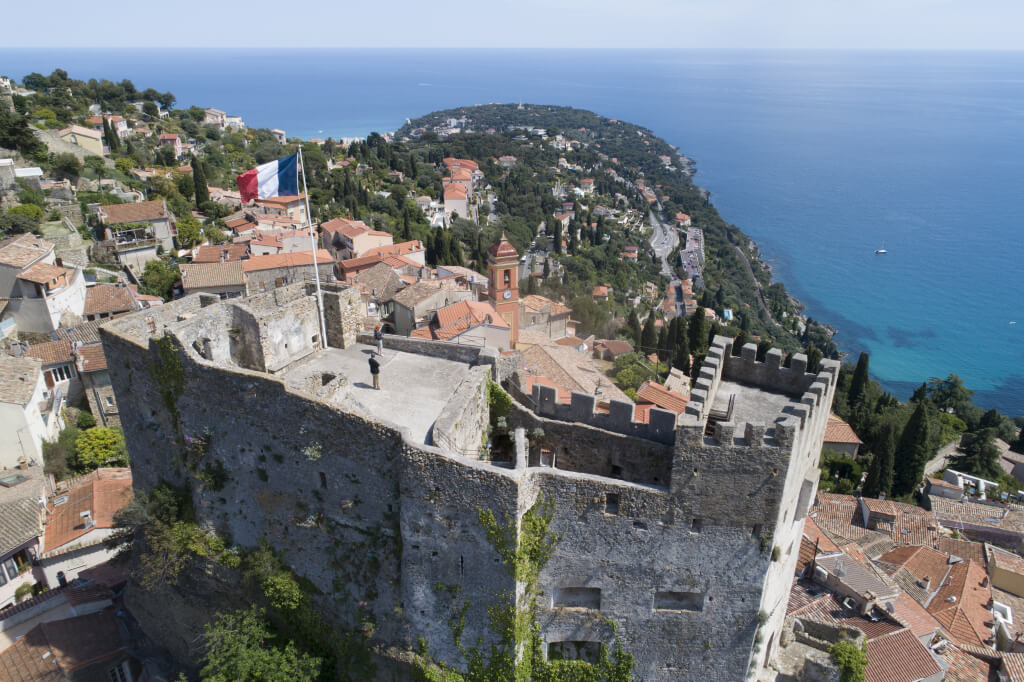
Château Medieval de Roquebrune
Roquebrune Castle, also known as Grimaldi Castle, is a medieval fortress located in France. It was built in the 10th century by Count Conrad I of Ventimiglia and was owned and inhabited by the Grimaldi family for many centuries. The castle is known for its ancient donjon, which is the oldest of its kind in France, and for being the only remaining example of Carolingian architecture in the country.
The castle was gifted to the city by William Ingram, and is now open to the public. Visitors can enjoy stunning views of the surrounding landscape from the top of the castle.

Château de Montauban
Château de Montauban is a 19th century manor house in Fontvieille. It was the summer residence of the Ambroy family that was often visited by the writer and poet Alphonse Daudet. Today, the house is a museum showing the history of Fontvieille as well as an exhibition dedicated to Alphonse Daudet. After a visit to the house, you can wander through the surrounding park. Please note that the majority of the museum is in French.

Château de Vauvenargues
Château de Vauvenargues is a fortified bastide in the Provence that is best known as the house and final resting place of painter Pablo Picasso. The house was the seat of the Counts of Provence and the Archbishops of Aix in the Middle Ages. In the 17th century, it was transformed into a family home for the Marquis de Vauvenargues.
In 1958, artist Pablo Picasso bought the house to have a more quiet residence after living in Cannes. Pablo Picasso and his wife Jacqueline are both buried on the estate. The house is still a private residence of the Picasso family and therefore not open to the public.
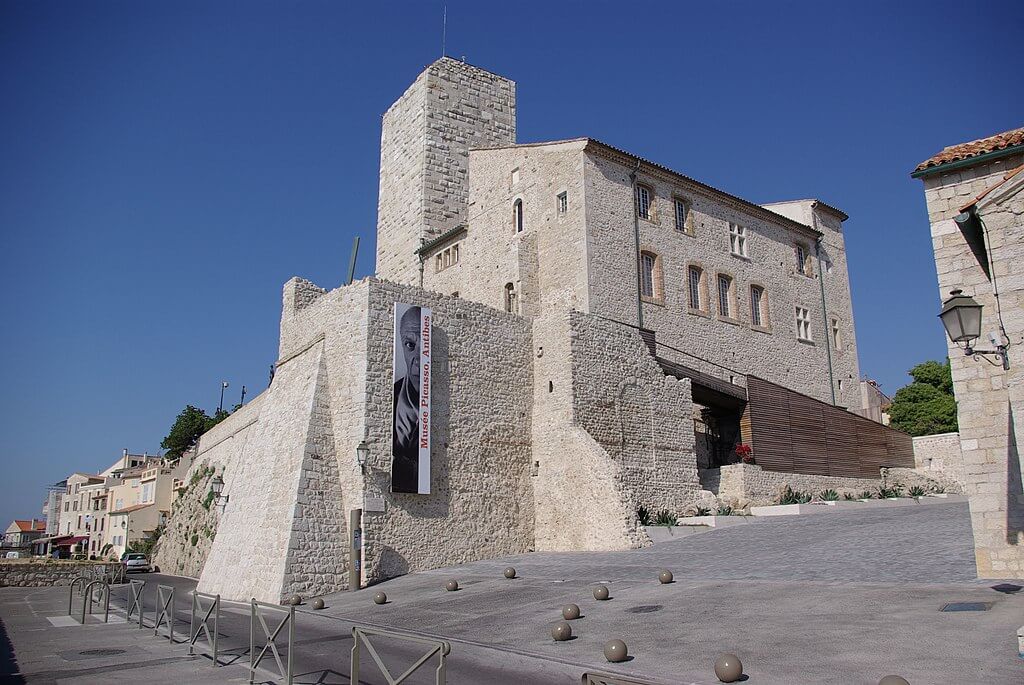
Chateau Grimaldi – Musée Picasso
The Musée Picasso, formerly known as the Château Grimaldi, is located in Antibes, France. It was built on the foundations of the ancient Greek town Antipolis and was originally constructed in the late 14th century as a residence for the feudal lords Marc and Luc Grimaldi.
From 1925 until 1946, the castle was known as the Grimaldi Museum. During this time, it was also the home of Pablo Picasso for a period of six months, during which he created 23 paintings and 44 sketches that were left in the castle. Over the years, additional works by Picasso have been donated to the museum, which has since been renamed the Picasso Museum.

Château Pastré
Château Pastré is a 19th century manor in Marseille designed in Louis XIII style. The Château is located in the heart of the Campagne Pastré, a large park spanning 112 hectares with beautiful gardens, lakes, and pods. From the hill, you will have a wonderful view of Marseille. The chateau is not open to visitors, but you can enjoy the outside from the park.

